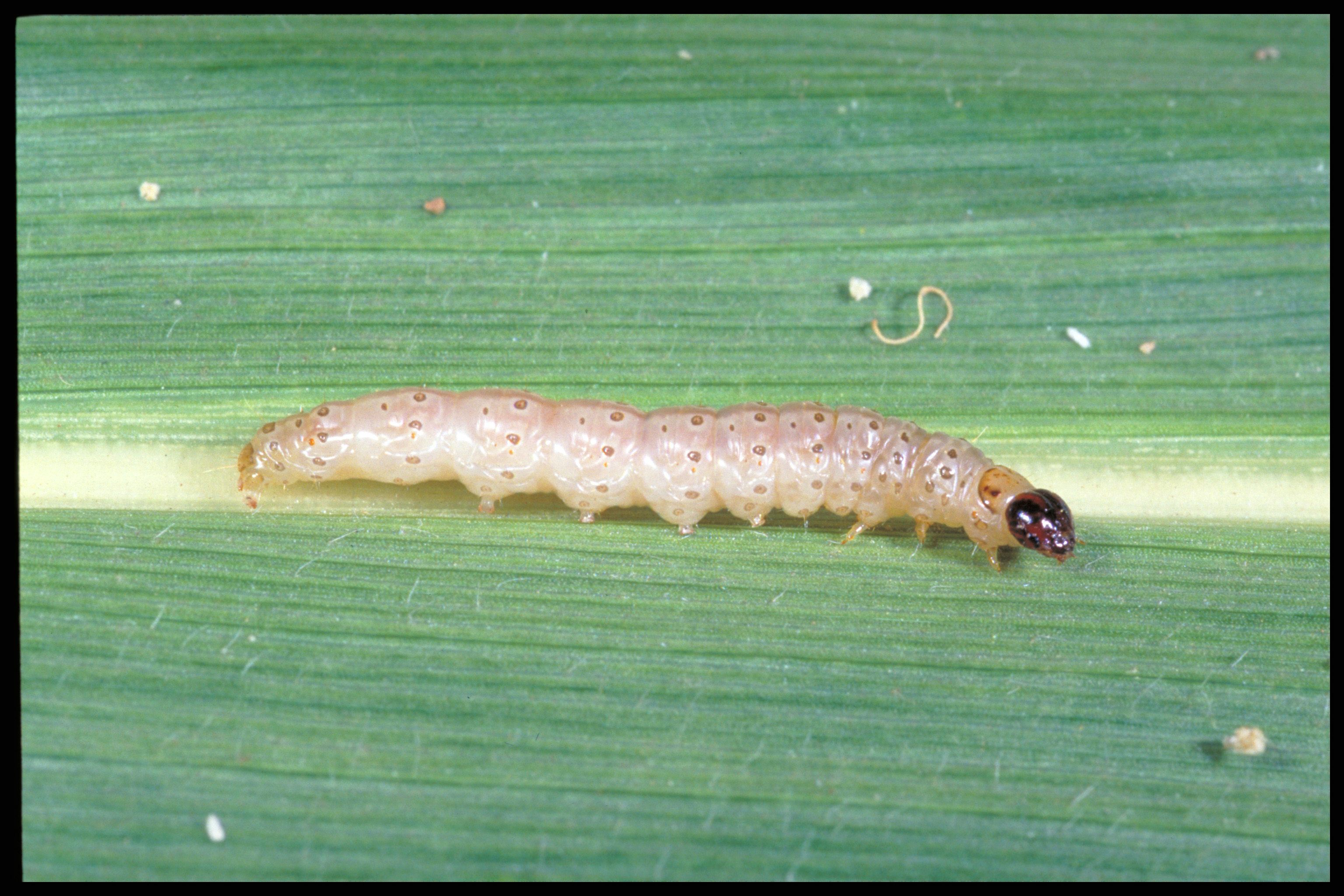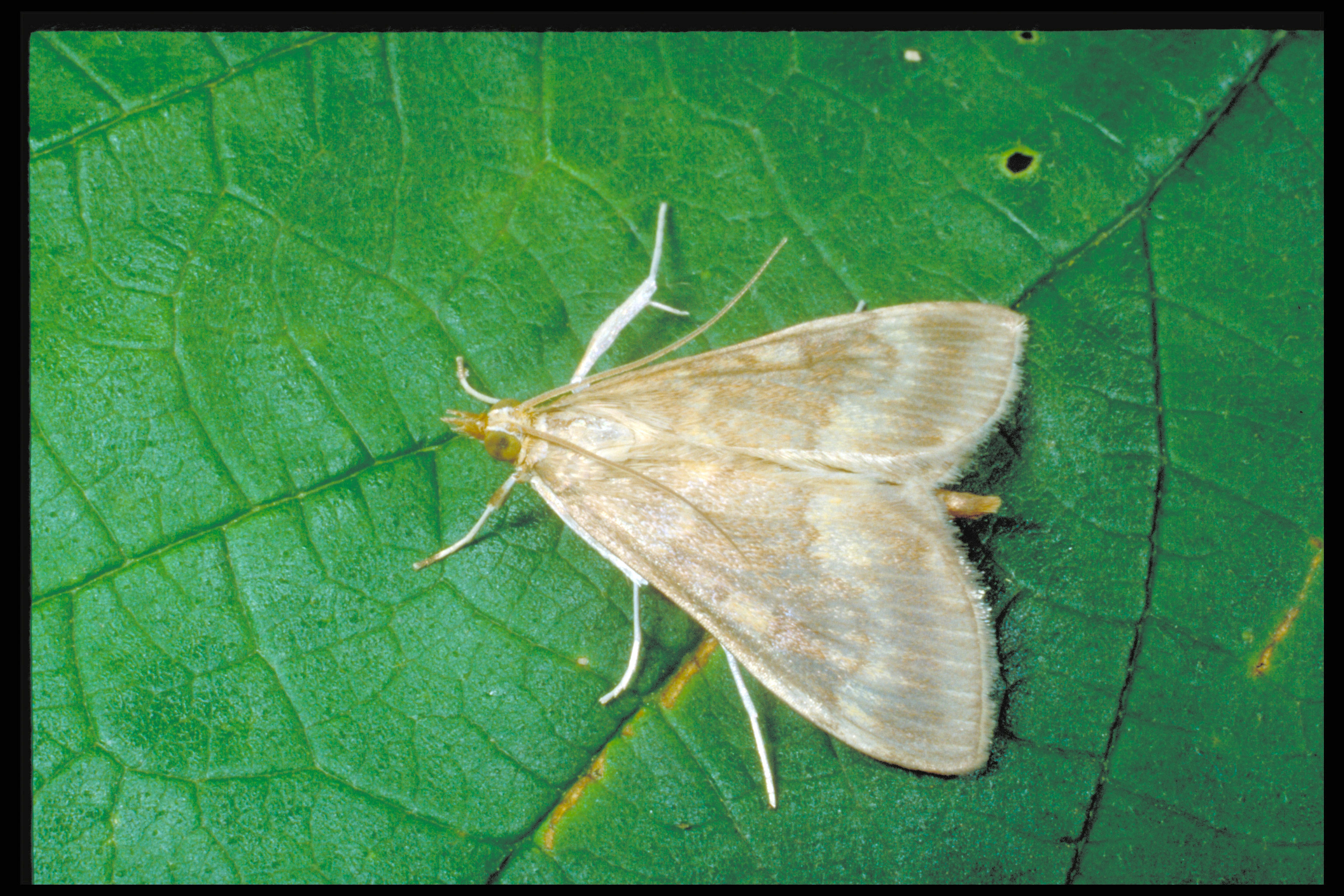European Corn Borer
Return to insect pests
The European corn borer (Ostrinia nubilalis) is one of the most common pests of sweet corn in Kentucky. This pest feeds on leaves, stalks, and tassels. An ear of the plant can have up to three generations per year. The larva is cream colored with a dark head, a faint gray stripe on its back, and numerous small, dark spots on the body. It is about 1 inch long when full-grown. The first generation occurs from early June to early July and is most damaging to early-planted corn. Damage is primarily due to borer tunneling in leaf midribs and the stalk. Treatment applied after borers have entered the plant will not be effective. On tasseled corn, the second-generation borers are dispersed over the plant and protected behind leaf sheaths and in axils. In this situation, plant coverage with the foliar spray is very important.

European corn borer larva
(Photo: UK Vegetable IPM Team, University of Kentucky)

European corn borer adult
(Photo: UK Vegetable IPM Team, University of Kentucky)
Management:
-
Inspect plants carefully from late July through August.
-
Consider an insecticide application if live borers are found on 25% of the plants.
-
Sprays for corn earworm during silking generally control this pest. Bt sweet corn is very effective against this pest.
-
Pheromone traps can be used to monitor adult activity.
